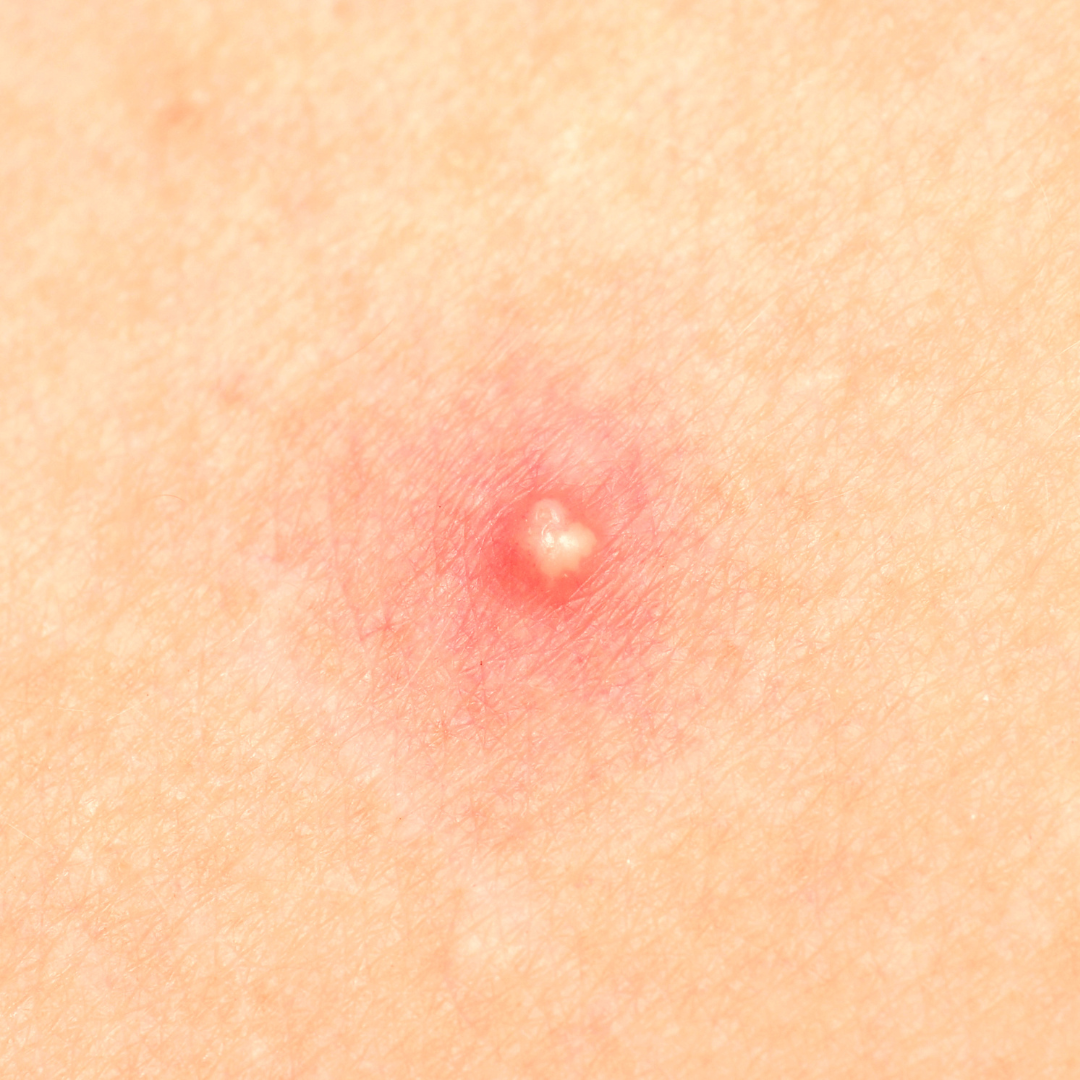


Closed comedones
Closed comedones, or whiteheads, are small, skin-colored acne lesions trapped under the surface. They occur when pores are clogged by oil and dead skin cells. Dermatologists recommend using topical retinoids to promote cell turnover and prevent pore clogging. Adding Potassium Azeloyl Diglycinate can be beneficial as it not only helps reduce sebum production but also lightens acne marks by inhibiting melanin synthesis.

Blackheads/ open comedones
Blackheads are visible on the surface as small black spots, caused by the oxidation of melanin in an open clogged pore.
Regular exfoliation and products containing benzoyl peroxide are commonly used. Potassium Azeloyl Diglycinate can also be effective in managing blackheads due to its properties that regulate sebum production and help clear pores.

Papules
Papules are small, raised, red bumps that may feel tender to touch. They form when the walls surrounding your pores break down from severe inflammation. Treatments include ingredients like niacinamide, salicylic acid and retinoids, which help reduce inflammation and clear blockages.

Pustules
Pustules are similar to papules but contain pus. They appear as red lesions with white or yellow centers. Treating pustules involves using anti-inflammatory and antibacterial ingredients like benzoyl peroxide and niacinamide, which help reduce the severity and prevent infection.

Nodules
Nodular acne is a severe form, presenting as large, painful bumps deep within the skin.
Due to its severity and potential for scarring, nodular acne often requires more aggressive treatment than milder forms of acne. Dermatologists typically recommend treatments such as oral antibiotics, isotretinoin (Accutane), and possibly corticosteroid injections to reduce inflammation and prevent scarring. Topical treatments alone are usually not effective against nodular acne due to the depth of the inflammation within the skin. It's crucial for individuals suffering from nodular acne to seek professional medical advice to manage this challenging condition effectively.
However, incorporating anti-inflammatory agents like Potassium Azeloyl
Diglycinate, Niacinamide OR Licorice Root Extact can support treatment by reducing overall inflammation and improving skin texture.

Cystic
Cystic acne is characterized by large, red, and painful breakouts deep in the skin. It's one of the most severe forms of acne and can lead to significant scarring.
Dermatologists often recommend a combination of oral antibiotics, isotretinoin, and hormonal treatments for women. Topical treatments may include benzoyl peroxide or niacinamide to reduce inflammation and bacteria. To aid the healing of the skin and to reduce the post-inflammatory hyperpigmentation, actives such as Potassium Azeloyl Diglycinate are also recommended.
Actives for Treating Acne
The choice of
treatment depends significantly on the type of acne. Niacinamide is excellent
for its anti-inflammatory properties, helping calm redness and swelling.
Potassium Azeloyl Diglycinate is known for its ability to brighten skin and
improve the skin barrier function as well as sebum regulating properties.
Retinoids are a cornerstone in acne treatment, promoting cell turnover and
preventing the formation of new comedones. Benzoyl peroxide is effective at
killing bacteria associated with acne, and salicylic acid is a beta-hydroxy
acid that helps clear out clogged pores.
Importance of a Healthy Skin Barrier
A strong and healthy
skin barrier is crucial in the acne journey. It helps protect the skin from
environmental aggressors and prevents the penetration of irritants that can
worsen acne. Ensuring that your skin barrier remains intact involves using
gentle skincare products, avoiding over-exfoliation, and hydrating the skin
adequately.
In conclusion,
understanding the type of acne you are dealing with and using targeted
treatments recommended by dermatologists can lead to significant improvements
in your skin health. Remember, a tailored approach and patience are key in the
battle against acne.
Flaws to Blooms
Azelaic Acid Serum for Acne, Rosacea & Blemishes Gentle PAD Formula
Share







